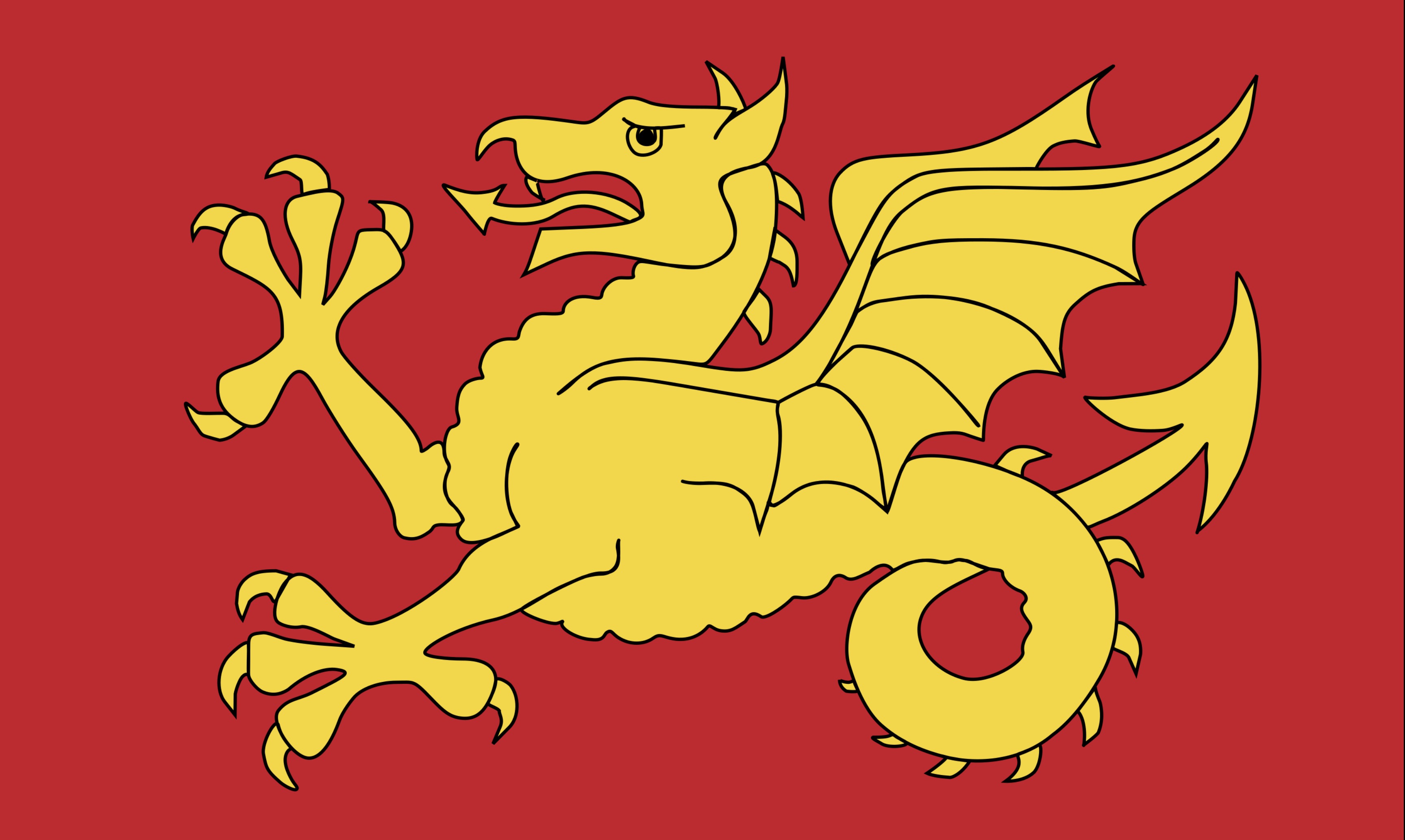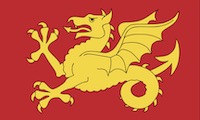| Living in Dorset, which was part of the Kingdom of Wessex the flag has always fascinated me and I have the Wessex Wyvern on the boot of my car and also a Flag which I occasionally hoist at no particular times. But that is unimportant.I am not a historian, nor am I good at remembering dates and I found that when I did any reading up on the Kingdom of Wessex you needed both. So this is an attempt to produce a simplified and if hopefully interesting History.The Wyvern as you can see above probably looks to most people like a dragon and they don't notice the subtle but important difference between a dragon and a wyvern. The main difference being that dragons usually have four legs and our wyvern has only two. Welsh Pendragon Wessex WyvernWhere does the Wyvern come from in English history?When you look up Weesex Wyvern you will find in may documents that it is mentoned three times. The one that is most fascinating is that Harald, when he was killed at the battle of Hastings was under the wyvern banner and this is purportedy proven by the Bayeux Tapestry.The Bayeux Tapestry, embroidered by English seamstresses about 1077, gives an almost contemporary picture of the scenes around the command post at the death of King Harold. Very much comic book style.You might look for hours along the tapestry and surely be forgiven for not finding the wyvern. It is not in the form you would ever expect. It wasn't until it was pointed out to me. that I recognised it. If you look at the lance the knight with the green shield is carrying you will see that a creature is holding the lance in its jaws. That supossedly is a wyvern. Definitely two legs and a tail.The man behind him is Harald with an arrow in his eye. But there are those that believe that this arrow was added later to the tapestry and in any case many historians have come to the conclusion that Harald was chopped to pieces by knights (a hit squad) that William had sent into battle specifically to kill him (not done in those days - very unsporting and definitely not cricket).The origin of the name WyvernAlthough the first depiction of a Wyvern has been lost to history, it is clear from bestiaries and alchemy texts that these little dragons were well-known throughout Europe as early as the medieval period, in the fifth century AD.Some scholars have speculated that the Wyvern may have sprung from Roman war banners, which would have been seen by the early Europeans when Rome’s conquering forces began to spread north. This idea is supported by the fact that the etymology of the word "wyvern” can be traced back, through French, to the Latin word “vipera,” which would have been used by Romans.In British heraldry, the term "wyver" first appears in Great Roll in 1312, and is derived from the Old French "wyvre", meaning "serpent". The term "dragon" appears by the following century. Afterwards, four-legged dragons become increasingly popular in heraldry and become distinguished from the two-legged kind during the sixteenth century, at which point the latter kind becomes commonly known as the "wyver" and later "wyvern"The FlagThe website of the Wessex Society claims the golden Wyvern has a long history; possibly it is the oldest flag still in current use anywhere in Europe, if not worldwide. But like all things with a long history, its origin is shrouded in mist and myth.The Saxon historian Widukind of Corvey, writing in the 10th century (Res Gestae Saxonica), mentions the dragon among a number of battle signs sacred to the Saxons. Henry of Huntingdon, writing in the 12th century, mentions the creature twice. Firstly at the Battle of Burford between the West Saxons and the Mercians in 752 AD. The victorious Army of Wessex was led by eolderman Ædelhun “who bore the king’s ensign of a golden dragon”. Secondly, at the battle of Ashingdon between Edmund Ironside and Cnut in 1016, "the valour of King Edmund was conspicuous, who, seeing the Danes fighting with more than usual vigour, left his royal station, which was according to custom between the Dragon and the Standard, and hastened into the front line". Wessex MMXXIII AD-pw-Imprint/ImpressumTo protect your privacy we neither store cookies nor use any google add-ons such as google analytics |


